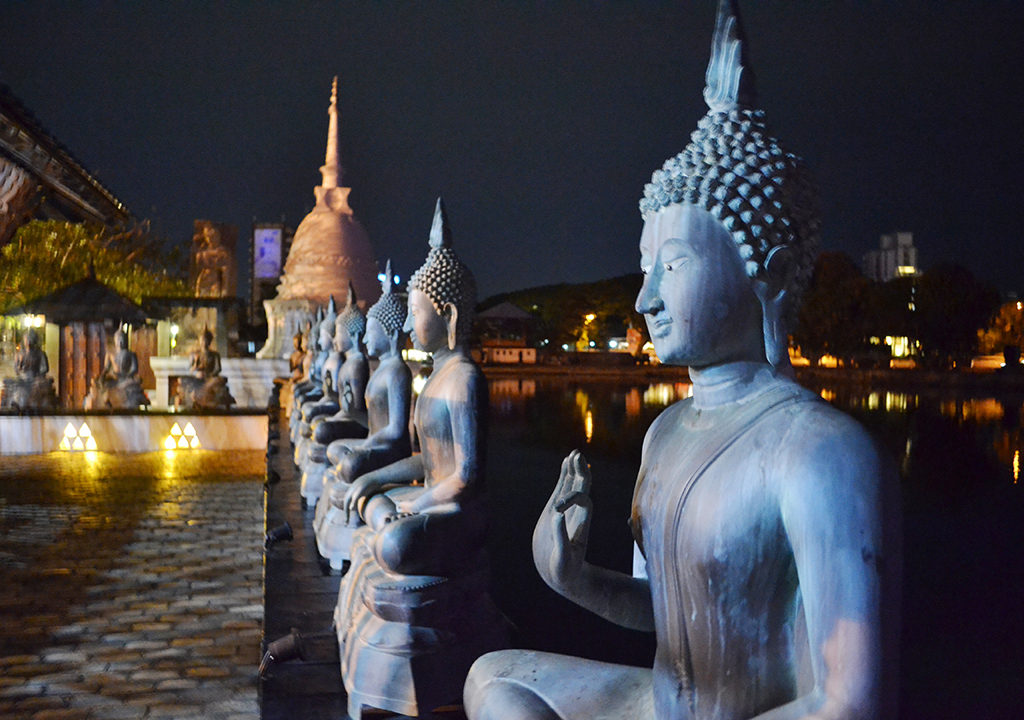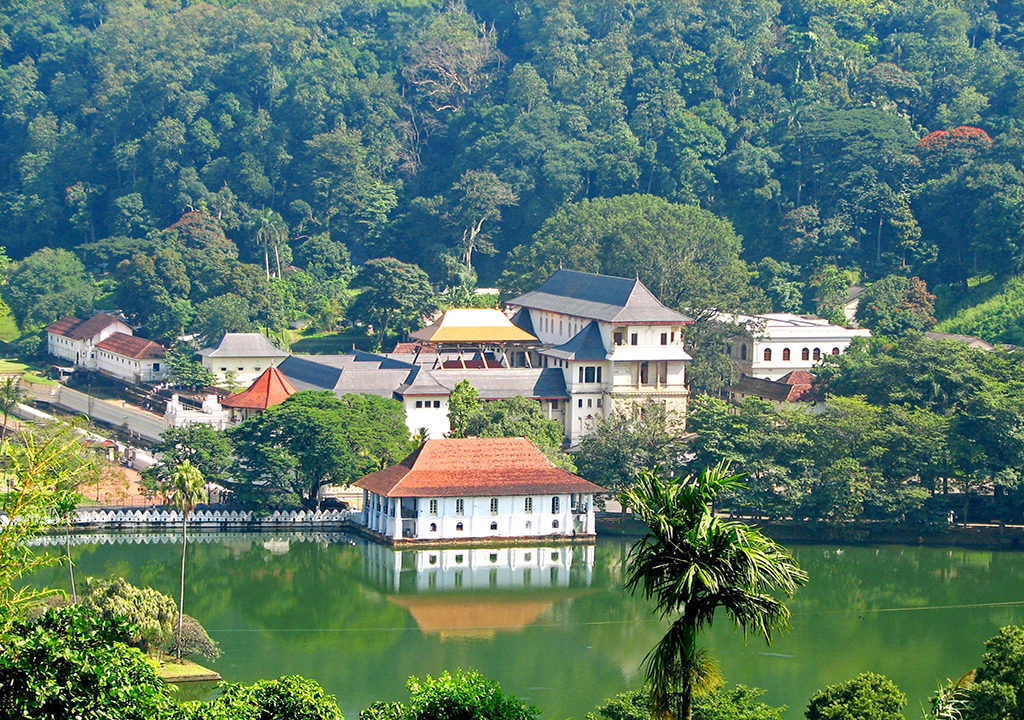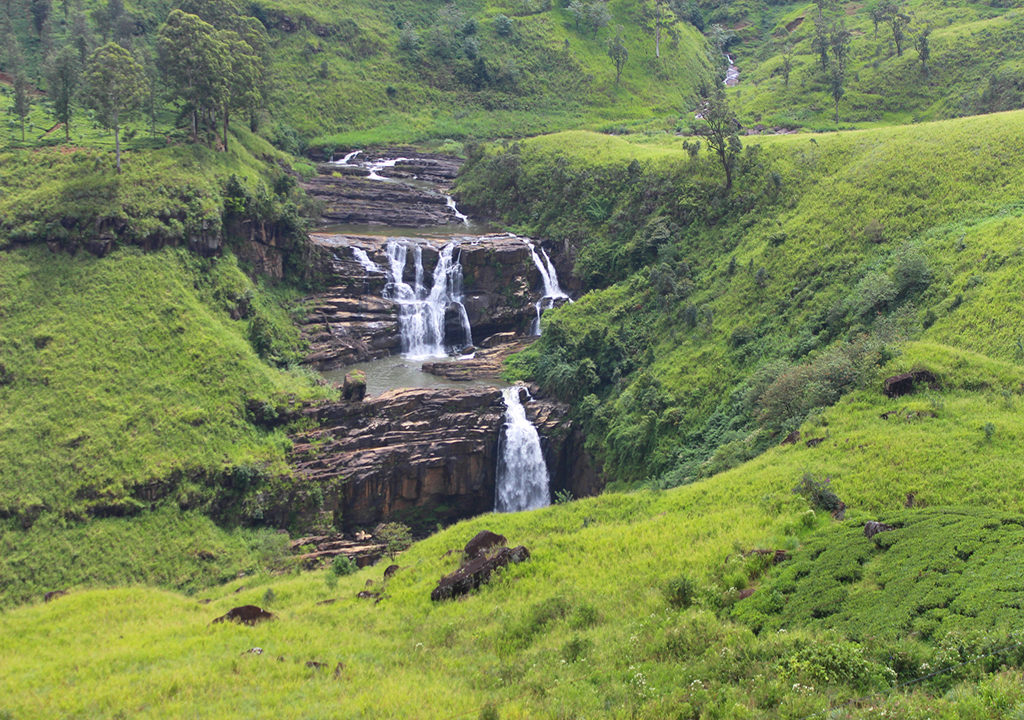Kandy Lake – Kandy Lake is a lake in the heart of the hill city of Kandy, Sri Lanka, built in 1807 by King Sri Vikrama Rajasinha of Sri Lanka next to the Temple of the Tooth. Over the years, it was reduced in size. It is a protected lake, with fishing banned.
Duhinda Falls – Five kilometres north of Badulla are the 63m-high Dunhinda Falls. The best time to see them is June and July, but they’re worth a visit at any time. It’s a good spot for a picnic.Temple of the Tooth of Relic – The Temple of the Sacred Tooth Relic is a Buddhist temple in the city of Kandy, Sri Lanka. It is located in the royal palace complex which houses the relic of the tooth of Buddha. Since ancient times, the relic has played an important role in local politics because it is believed that whoever holds the relic holds the governance of the country.
Hakgala Gardens -The Hakgala Gardens, 10km southeast of Nuwara Eliya (and about 200m lower), was originally a plantation of cinchona, the plant from which the antimalarial drug quinine is extracted. Later, the gardens were used for experiments in acclimatizing temperate-zone plants to life in the tropics. The gardens were run by the same family for three generations until the 1940s. Today Hakgala sprawls across 27 hectares and is famed for its roses, ferns and medicinal plants.
Asgiriya Maha Vihara – The principal viharas (Buddhist complexes) in Kandy have considerable importance – the high priests of the two best known, Malwatte and Asgiriya, are the most important in Sri Lanka. This temple is the headquarters of two of the main nikayas (orders of monks).
National Museum – This museum once housed Kandyan royal concubines and now features royal regalia and reminders of pre-European Sinhalese life. On display is a copy of the 1815 agreement that handed over the Kandyan provinces to British rule
Uda Walawe National Park – Udawalawe National Park lies on the boundary of Sabaragamuwa and Uva Provinces, in Sri Lanka. The national park was created to provide a sanctuary for wild animals displaced by the construction of the Udawalawe reservoir on the Walawe River, as well as to protect the catchment of the reservoir.
Nallur Kandaswamy Kovil – It is one of the most significant Hindu temples in the Jaffna District of Northern Province, Sri Lanka. It stands in the town of Nallur. The presiding deity is Lord Muruga in the form of the holy vel.
Sri Nagavihara International Buddhist Centre – UFor Buddhists there’s the solitary Sri Nagavihara International Buddhist Centre which was quickly rebuilt after government forces retook Jaffna in 1995.
Jaffna Archaeological Museum – This unkempt but interesting museum is hidden away at the end of a messy garden behind a cubic concrete events hall that looks rather like a Masonic lodge. Asking for directions may elicit odd responses since most locals don’t think of or refer to it as a museum.
St. John’s Cathedral – The tiny Anglican church of St John’s looks like a Sussex chapel, but with the napped flints replaced by cut sandstone chunks in the walls. Appropriately enough there’s a cricket pitch ranged behind.
Bodhi Tree Temple – It is the second most sacred place in Sri Lanka, after the Sri Dalada Maligawa, or Temple of the Tooth, in Kandy. The Bodhi Tree is allegedly a cutting from the original Bodhi tree under which the Buddha gained enlightenment, and has been continuously guarded for over 2000 years, making it the oldest historically authenticated tree in the world. The temple complex is surrounded by walls, and is quite busy with monks and worshipers.
Ruwanwelisaya – It is the oldest and most voluminous stupa at Anuradhapura, which has been fully restored, painted white, and is currently a centre of worship. Walk from the Sri Maha Bodhiya, past the Brazen Palace (an ancient palace that once supported a bronze roof) to the stupa. There are several image houses at the stupa, as well as four smaller stupas in the four corners of the complex.
The Archaeolgy Museum – Showcases many of the artifacts found at the site, from jewelery and gems to coinage and pottery. The museum is more focused on religious and elite objects, although some commoner artifacts are also shown.
The Folk Museum Showcases the archaeology of Anuradhapura from a more folk perspective. It’s a large stupa which is currently undergoing restoration work.
The Citadel – This was the secular centre of the city of Anandhapura. The Gedige, many historical structures and other palaces can be found here, as well as the old city walls.






